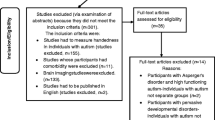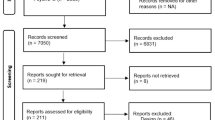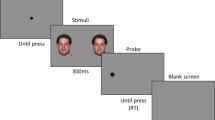Abstract
Although empathy is rooted early in life, the ability to understand and share the emotions of others continues to develop after childhood. Here, we aimed at exploring developmental changes in the neural mechanisms underlying empathy from childhood to early adulthood. Using functional magnetic resonance imaging, 47 healthy male subjects aged 8–27 years were investigated during an explicit empathy task. Emotional faces were presented and participants were either asked to infer the emotional state from the face (other-task) or to judge their own emotional response to the face (self-task). A perceptual decision on the width of faces was used as a control condition. Age-related activity increases were observed in the fusiform gyrus and inferior frontal gyrus, depending on whether subjects attributed emotions to self or other. During the self-task, activity in the right precuneus and right intraparietal sulcus decreased as a function of age. No age-related differences were observed in behavioral performance measures. Increased activity in the fusiform gyrus and in the frontal component of the human mirror neuron system with increasing age may be explained by greater experience and expertise accumulated during socio-emotional interactions. Greater recruitment of right parietal structures in younger as compared to older subjects might reflect developmental differences in the cognitive strategies to infer one’s own emotional response. This study is the first to show developmental changes in the neural mechanisms supporting empathy. Our findings may have important implications for the development of novel therapeutic interventions in clinical conditions characterized by empathy deficits, such as autism spectrum disorder.



Similar content being viewed by others
Notes
Norms refer to the English version. No population norms are available for the German translation of the Griffith Empathy Measure, which was used in the present study. Mean scores of norms for the Griffith Empathy Measure are estimated from separate scores for younger children (7–10 years) and older children and adolescents (>11 years).
Norms refer to the English version. No population norms are available for the German translation of the Balanced Emotional Empathy Scale, which was used in the present study.
References
Achenbach TM (1993) Empirically based taxonomy: how to use syndromes and profile types derived from the CBCL from 4 to 18, TRF, and WSR. University of Vermont, Department of Psychiatry, Burlington
Adams GR (1983) Social competence during adolescence: social sensitivity, locus of control, empathy, and peer popularity. J Youth Adolesc 12:203–211
Adams GR, Schvaneveldt JD, Jenson GO (1979) Sex, age and perceived competency as correlates of empathic ability in adolescence. Adolescence 14:811–818
Aylward EH, Park JE, Field KM, Parsons AC, Richards TL, Cramer SC, Meltzoff AN (2005) Brain activation during face perception: evidence of a developmental change. J Cogn Neurosci 17:308–319
Bastiaansen JACJ, Thioux M, Keysers C (2009) Evidence for mirror systems in emotions. Philos Trans R Soc Lond B Biol Sci 364:2391–2404
Blakemore S-J (2008) The social brain in adolescence. Nat Rev Neurosci 9:267–277
Blakemore S-J, den Ouden H, Choudhury S, Frith C (2007) Adolescent development of the neural circuitry for thinking about intentions. SCAN 2:130–139
Buccino G, Binkofski F, Fink GR, Fadiga L, Fogassi L, Gallese V, Seitz RJ, Zilles K, Rizzolatti G, Freund HJ (2001) Action observation activates premotor and parietal areas in a somatotopic manner: an fMRI study. Eur J Neurosci 13:400–404
Büchel C, Wise RJS, Mummery CJ, Poline J-B, Friston KJ (1996) Nonlinear regression in parametric activation studies. Neuroimage 4:60–66
Burnett S, Bird G, Moll J, Frith C, Blakemore S-J (2009) Development during adolescence of the neural processing of social emotion. J Cogn Neurosci 21:1736–1750
Calvo-Merino B, Glaser DE, Grèzes J, Passingham RE, Haggard P (2004) Action observation and acquired motor skills: an fMRI study with expert dancers. Cereb Cortex 15:1243–1249
Carr L, Iacoboni M, Dubeau M-C, Mazziotta JC, Lenzi GL (2003) Neural mechanisms of empathy in humans: a relay from neural systems for imitation to limbic areas. Proc Natl Acad Sci USA 100:5497–5502
Cavanna AE, Trimble MR (2006) The precuneus: a review of its functional anatomy and behavioural correlates. Brain 129:564–583
Cross ES, Hamilton AF, Grafton ST (2006) Building a motor simulation de novo: observation of dance by dancers. Neuroimage 31:1257–1267
Dadds MR, Hunter K, Hawes DJ, Frost ADJ, Vassallo S, Bunn P, Merz S, El Masry J (2008) A measure of affective and cognitive empathy in children using parent ratings. Child Psychiatry Hum Dev 39:111–122
Dapretto M, Davies MS, Pfeifer JH, Scott AA, Sigman M, Bookheimer SY, Iacoboni M (2006) Understanding emotions in others: mirror neuron dysfunction in children with autism spectrum disorders. Nat Neurosci 9:28–30
Davis M (1980) A multidimensional approach to individual differences in empathy. JSAS 10:85
Davis MD, Franzoi SL (1991) Stability and change in adolescent self-consciousness and empathy. J Res Pers 25:70–87
Decety J, Jackson PL (2004) The functional architecture of human empathy. Behav Cogn Neurosci Rev 3:71–100
Decety J, Moriguchi Y (2007) The empathic brain and its dysfunction in psychiatric populations: implications for intervention across different clinical conditions. Biopsychosoc Med 16:1–22
Decety J, Michalska K, Akitsuki Y (2008) Who caused the pain? An fMRI investigation of empathy and intentionality in children. Neuropsychologia 46:2607–2614
Decety J, Michalska KJ, Akitsuki Y, Lahey BB (2009) Atypical empathic responses in adolescents with aggressive conduct disorder: A functional MRI investigation. Biol Psychiatry 80:203–211
Deeley Q, Daly EM, Azuma R, Surguladze S, Giampietro V, Brammer MJ, Hallahan B, Dunbar RIM, Phillips ML, Murphy DGM (2008) Changes in male brain responses to emotional faces from adolescence to middle age. Neuroimage 40:389–397
Derogatis LR (1993) Brief Symptom Inventory (BSI), administration, scoring, and procedures manual. National Computer Services, Minneapolis
Eickhoff SB, Stephan KE, Mohlberg H, Grefkes C, Fink GR, Amunts K, Zilles K (2005) A new SPM toolbox for combining probabilistic cytoarchitectonic maps and functional imaging data. Neuroimage 25:1325–1335
Ekman P, Friesen W, Hager J (2002) Facial action coding system. Research Nexus, Salt Lake City, UT
Gauthier I, Tarr MJ, Anderson AW, Skudlarski P, Gore JC (1999) Activation of the middle fusiform “face are” increases with expertise in recognizing novel objects. Nat Neurosci 2:568–573
Giedd JN, Blumenthal J, Jeffries NO, Castellanos FX, Liu H, Zijdenbos A, Paus T, Evans AC, Rapoport JL (1999) Brain development during childhood and adolescence: a longitudinal MRI study. Nat Neurosci 2:861–863
Gitelman DR (2002) ILAB: a program for postexperimental eye movement analysis. Behav Res Meth Inst C 34:605–612
Greimel E, Schulte-Rüther M, Kircher T, Kamp-Becker I, Remschmidt H, Fink GR, Herpertz-Dahlmann B, Konrad K (2010) Neural mechanisms of empathy in adolescents with autism spectrum disorder and their fathers. Neuroimage 49:1055–1065
Guyer AE, Monk CS, McClure-Tone EB, Nelson EE, Roberson-Nay R, Adler AD, Fromm SJ, Leibenluft E, Pine DS, Ernst M (2008) A developmental examination of amygdala response to facial expressions. J Cogn Neurosci 20:1565–1582
Hatfield E, Cacioppo JT, Rapson RL (1994) Emotional contagion. Cambridge University Press, New York
Herba C, Phillips M (2004) Annotation: development of facial expression recognition from childhood to adolescence: behavioural and neurological perspectives. J Child Psychol Psychiatry 45:1185–1198
Iacoboni M, Dapretto M (2006) The mirror neuron system and the consequences of its dysfunction. Nat Rev Neurosci 7:942–951
Iacoboni M, Mazziotta JC (2007) Mirror neuron system: basic findings and clinical applications. Ann Neurol 62:213–218
Iacoboni M, Woods RP, Brass M, Bekkering H, Mazziotta JC, Rizzolatti G (1999) Cortical mechanisms of human imitation. Science 286:2526–2528
Jabbi M, Swart M, Keysers C (2007) Empathy for positive and negative emotions in the gustatory cortex. Neuroimage 34:1744–1753
Kaplan JT, Iacoboni M (2006) Getting a grip on other minds: mirror neurons, intention understanding, and cognitive empathy. Soc Neurosci 1:175–183
Kaufman J, Birmaher B, Brent D, Rao U, Flynn C, Moreci P, Williamson D, Ryan N (1997) Schedule for Affective Disorders and Schizophrenia for School-Age Children-Present and Lifetime Version (K-SADS-PL): initial reliability and validity data. J Am Acad Child Adolesc Psychiatry 36:980–988
Kilner JM, Blakemore S-J (2007) How does the mirror neuron system change during development? Dev Psychol 10:524–526
Kobayashi C, Glover GH, Temple E (2007) Children′s and adults′ neural bases of verbal and nonverbal “theory of mind”. Neuropsychologia 45:1522–1532
Kobayashi C, Glover GH, Temple E (2008) Switching language switches mind: linguistic effects on developmental neural bases of “Theory of Mind”. SCAN 3:62–70
Leichnetz GR (2001) Connections of the medial posterior parietal cortex (area 7 m) in the monkey. Anat Rec 263:215–235
Leslie KR, Johnson-Frey SH, Grafton ST (2004) Functional imaging of face and hand imitation: towards a motor theory of empathy. Neuroimage 21:601–607
Light SN, Zahn-Waxler C, Frye C, Goldsmith HH, Davidson RJ (2009) Empathy is associated with dynamic change in prefrontal brain electrical activity during positive emotion in children. Child Dev 80:1210–1231
Litvack-Miller W, McDougal D, Romney DM (1997) The structure of empathy during middle childhood and its relationship to prosocial behaviour. Genet Soc Gen Psychol Monogr 123:303–325
Lou HC, Luber B, Crupain M, Keenan JP, Nowak M, Kjaer TW, Sackeim HA, Lisanby SH (2004) Parietal cortex and the representation of the mental Self. Proc Natl Acad Sci USA 27:6832
Maldjian JA, Laurienti PJ, Kraft RA, Burdette JH (2003) An automated method for neuroanatomic and cytoarchitectonic atlas-based interrogation of fMRI data sets. Neuroimage 19:1233–1239
Mehrabian A (1997) Relations among personality scales of aggression, violence, and empathy: validational evidence bearing on the risk of eruptive violence scale. Aggress Behav 23:433–445
Monk CS, McClure EB, Nelson EE, Zarahn E, Bilder RM, Leibenluft E, Charney DS, Ernst M, Pine DS (2003) Adolescent immaturity in attention-related brain engagement to emotional facial expressions. Neuroimage 20:420–428
Moriguchi Y, Ohnishi T, Mori T, Matsuda H, Komaki G (2007) Changes of brain activity in the neural substrates for theory of mind during childhood and adolescence. Psychiatry Clin Neurosci 61:355–363
Oldfield RC (1971) Assessment and analysis of handedness—Edinburgh Inventory. Neuropsychologia 9:97–113
Pfeifer JH, Lieberman MD, Dapretto M (2007) “I know you are but what am I?”: neural bases of self- and social knowledge retrieval in children and adults. J Cogn Neurosci 19:1323–1337
Pfeifer JH, Iacoboni M, Mazziotta JC, Dapretto M (2008) Mirroring others′ emotions relates to empathy and interpersonal competence in children. Neuroimage 39:2076–2085
Platek SM, Loughead JW, Gur RC, Busch S, Ruparel K, Phend N, Panyavin IS, Langleben DD (2006) Neural substrates for functionally discriminating self-face from personally familiar faces. Hum Brain Mapp 27:91–98
Premack D, Woodruff G (1978) Does the chimpanzee have a theory of mind? Behav Brain Sci 1:515–526
Preston SD, de Waal FBM (2002) Empathy: its ultimate and proximate bases. Behav Brain Sci 25:1–72
Sagi A, Hoffmann ML (1976) Empathic distress in the newborn. Dev Psychol 12:175–176
Schulte-Rüther M, Markowitsch HJ, Fink GR, Piefke M (2007) Mirror neuron and theory of mind mechanisms involved in face-to-face interactions: a functional magnetic resonance imaging approach to empathy. J Cogn Neurosci 19:1354–1372
Schulte-Rüther M, Markowitsch HJ, Shah NJ, Fink GR, Piefke M (2008) Gender differences in brain networks supporting empathy. Neuroimage 42:393–403
Schulte-Rüther M, Greimel E, Markowitsch HJ, Kamp-Becker I, Remschmidt H, Fink GR, Piefke M (in press) Dysfunctions of brain networks supporting empathy—an fMRI investigation in adults with autism spectrum disorder. Soc Neurosci
Schultz RT (2005) Developmental deficits in social perception in autism: the role of the amygdala and fusiform face area. Int J Dev Neurosci 23:125–141
Shamay-Tsoory SG, Aharon-Peretz J, Perry D (2009) Two systems for empathy: a double dissociation between emotional and cognitive empathy in inferior frontal gyrus versus ventromedial prefrontal lesions. Brain 132:617–627
Strayer J (1993) Children’s concordant emotions and cognitions in response to observed emotions. Child Dev 64:188–201
Thomas KM, Drevets WC, Whalen PJ, Eccard CH, Dahl RE, Ryan ND, Casey BJ (2001) Amygdala response to facial expressions in children and adults. Biol Psychiatry 49:309–316
Uddin LQ, Kaplan JT, Molnar-Szakacs I, Zaidel E, Iacoboni M (2005) Self-face recognition activates a frontoparietal “mirror” network in the right hemisphere: an event-related fMRI study. Neuroimage 25:926–935
Wang AT, Lee SS, Sigman M, Dapretto M (2006) Developmental changes in the neural basis of interpreting communicative intent. SCAN 1:107–121
Wechsler D (1991) Manual for the Wechsler Intelligence Scale for Children, 3rd edn. Psychological Corporation, San Antonio
Wechsler D (1997) Manual for the Wechsler Adult Intelligence Scale-III. Psychological Corporation, San Antonio
Wild B, Erb M, Bartels M (2001) Are emotions contagious? Evoked emotions while viewing emotionally expressive faces: quality, quantity, time course and gender differences. Psychiatry Res 102:109–124
Acknowledgments
We are grateful to all participants with their families who took part in this study. We wish to thank our colleagues in the MR and Cognitive Neurology groups at the Institute of Medicine (Research Center Jülich) for their support and helpful advice. This work was supported by the Interdisciplinary Center of Clinical Research Aachen (IZKF, N68a; K.K. and G.R.F.); the German Research Foundation (IRTG 1328; DFG-KFO112-II, TP 5; K.K. B.H.-D.); and by a fellowship for doctoral students from the German National Academic Foundation (E.G.).
Conflict of interest statement
B. H.-D. is a consultant to Eli Lilly and has received industry research funding from AstraZeneca, Eli Lilly, Novartis, and Janssen Cilag. All other authors have no financial relationships to disclose and declare that they have no conflict of interest.
Author information
Authors and Affiliations
Corresponding author
Electronic supplementary material
Below is the link to the electronic supplementary material.
Rights and permissions
About this article
Cite this article
Greimel, E., Schulte-Rüther, M., Fink, G.R. et al. Development of neural correlates of empathy from childhood to early adulthood: an fMRI study in boys and adult men. J Neural Transm 117, 781–791 (2010). https://doi.org/10.1007/s00702-010-0404-9
Received:
Accepted:
Published:
Issue Date:
DOI: https://doi.org/10.1007/s00702-010-0404-9




